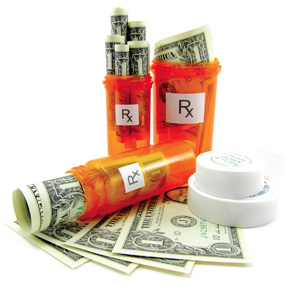
Three trillion dollars. That’s trillion with a t. That’s more money than the annual gross domestic product (GDP) of Canada and South Korea combined. At a rate of spending exceeding more than $8 billion a day, the U.S. healthcare system is a massive behemoth, guzzling and spewing 20% of the U.S. GDP. By comparison, the 2015 Pentagon budget, a paltry $0.8 trillion, is surpassed by healthcare expenditures annually before the end of April. There is no enterprise in the world that remotely approaches the size and scope of American medicine.
In his book, America’s Bitter Pill, the investigative reporter Steven Brill outlined the key drivers that make our healthcare at least 60% more costly than any other system anywhere: exorbitant hospital charges, spiraling costs of medication, relatively hefty provider fees, all capped by an eye-popping $0.4 trillion to cover administrative costs, the icing on a very rich cake.1
A lengthy procession of politicians and healthcare administrators has offered an array of remedies that were supposed to bend the rising slope of the healthcare spending curve, the most recent being The Affordable Care Act (ACA), better known as Obamacare. These efforts include cost shifting to patients (e.g., higher co-payments), tightening access to costly drugs (e.g., formulary exclusions) and pruning provider networks (e.g., excluding some providers, primarily for financial reasons). Many annual insurance deductibles now routinely exceed $5,000.
Some policy experts applaud the shift of the fiscal burden from insurer to patient, viewing this development as a healthy one. To follow this line of reasoning, forcing patients to become more price conscious alters their purchasing behaviors accordingly. However, one key ingredient is missing in this messy remedy: price transparency. Shouldn’t consumers be able to review a list of charges before they make their decisions? Isn’t that the way commerce normally works?
Overspending on healthcare creates some major heartburn for our economy. First, it chokes off the potential growth of other economic sectors because so much of GDP is consumed by healthcare. Although the annual growth rate has slowed, the total cost of healthcare remains so enormous that just a 3% rise in growth amounts to an additional $100 billion per year. Second, some medical bills are simply insurmountable and account for about 20% of all personal bankruptcies.
It may turn out that the steady shifting of costs to our patients’ wallets may provide the greatest impetus for disruption of the colossal healthcare apparatus. A growing number of patients have quietly moved to the newest frontier in healthcare, best described as do it yourself (DIY) care. DIY care is an effort to provide quality care at reasonable prices that are transparent, two concepts totally alien to the U.S. market. DIY care is teeming with some exciting ideas and not every one of them involves using a smartphone app! Imagine if some forms of DIY care were to gain a foothold in a $3 trillion industry. Their success could force traditional stakeholders to reexamine their costly, and often illogical, ways of doing business. Let’s explore a few of these new ideas.
Bloody Simple
To describe Elizabeth Holmes as an overachiever would be something of an understatement. Even among the high-flying whiz kids of Silicon Valley, her intellect and determination stand out.2 After completing her junior year at Stanford University in Palo Alto, Calif., she conceived a way to perform multiple laboratory tests at once, using the same drop of blood, and to wirelessly deliver the resulting information to a doctor. That summer, she filed a patent for the idea, one that was ultimately granted in November 2007.


